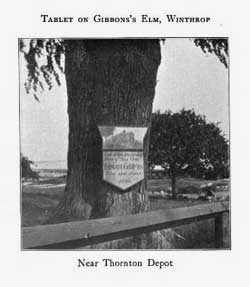 |
| Tablet on Gibbon's Elm, Winthrop |
| |
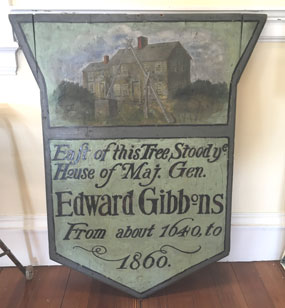 |
| Tablet at Winthrop Public Library |
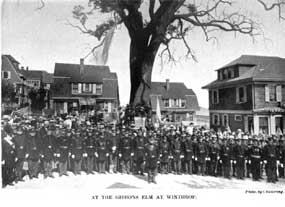 |
|
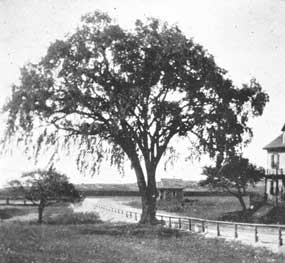 |
|
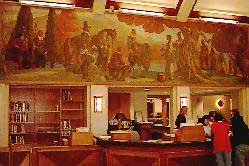 |
|
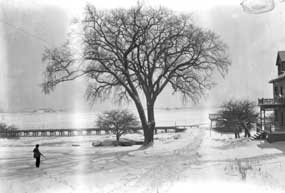 |
|
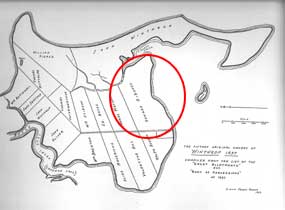 |
|
 |
|
|
| "...The old Gibbons elm, which had stood on Winthrop Street, Winthrop near the Thornton station, for 276 years, was felled July 8, 1912, by order of the selectmen of that town because, in its rapidly decaying condition it had become dangerous to the public...." |
|
|
| "...On January 9, 1634 a grant of fourscore acres of land at "Pullen Poynt," now called Point Shirley was made to Edward Gibbons. On June 12, 1637, eighty acres of upland and marsh were also granted to him. On this last grant of land stands the old tree whose picture is the frontispiece of this book. East of this tree stood the house here pictured. It is said to have been 'a very comfortable farmhouse containing several rooms, some of which were fitted up for the use of his family....'" |
|
"...Edward Gibbons (Gibones, Gibbones) emigrated from England to the Plymouth Colony in 1624 as an indentured servant to Thomas Morton. Unable to get along with the Pilgrim authorities, Morton established his own small colony at Mount Wollaston (Quincy, Mass.). Renamed Merrymount (Mare Mount), Morton's religious beliefs, social excesses (including the infamous Maypole revels), his trading with Native Americans, and his success, ran afoul of first the Pilgrims in Plymouth, and eventually the Puritans in Boston, leading to his banishment from the colonies first in 1628, and then finally in 1630.
Edward had a change of heart and allied himself with the Puritans, joining the Salem Church in 1628. In 1629 he was living in Charlestown near Cobble Hill, present-day Somerville, Mass., and was admitted to the Boston Church as member #113. This despite having been an associate of Morton, and possibly danced around the Maypole, Edward had redeemed himself to the degree that in 1630 he was trusted to arrest Morton and inventory his possesions...." |
|
|
| "...The old Gibbons elm, which had stood on Winthrop Street, Winthrop near the Thornton station, for 276 years, was felled July 8, 1912, by order of the selectmen of that town because, in its rapidly decaying condition it had become dangerous to the public..." |
|
| "...Mr. Edward Gibbons, had a very comfortable farmhouse, somewhere near the great elm at Thornton Park Station. There were several rooms, a part of which were fitted up for the use of his family, although he had a house of more than usual pretension in Boston...'" |
|
| "...An important early non-resident property owner was Major Edward Gibbons, who built a comfortable farmhouse in the Thornton Park section, about where Winthrop Street and Pleasant Street and Washington Avenue now meet. The Gibbons house was probably one of the largest and better-built structures in Winthrop's early days..." |
|
| "...Edward Gibbons, the third owner of the ship "Planter" was one of the most famous characters in the colony, and was distinguished both in military and business enterprises. His disposition, although of an adventurous and roving nature, was not vicious. After living some time at Hilton's settlement on the Piscataqua River, he joined Morton at Mount Wollaston, attracted as much by the great profits to be obtained by hunting and trading with the Indians as by the open air amusements which were peculiar to Merry Mount..." |
|
| “...Squaw Sachem and Webcowit deed to Jotham Gibbons, (oldest son of Edward Gibbons, who was 3 years old at this time) upon her death all the land she reserved for herself. "This I do without seeking to of him or any of his; but I receiving many kindnesses of them, am willing to acknowledge their many kindnesses by this small gift to their son." Squaw Sachem and Webcowit receive 36 shillings from Edward Gibbons for, "the land between Charlestowne and Wenotomies River..." |
|
| “During the 1640s, Artillery Company member Edward Gibbons convinced Bay Colony authorities to intervene in the struggle between Charles LaTour and Charles D’Aulany, two rival claimants to authority and profitable trading forts in French Acadia. Gibbons’ personal financial involvement with the untrustworthy LaTour eventually brought about his economic ruin.” |
| View Google Map |
|
 |